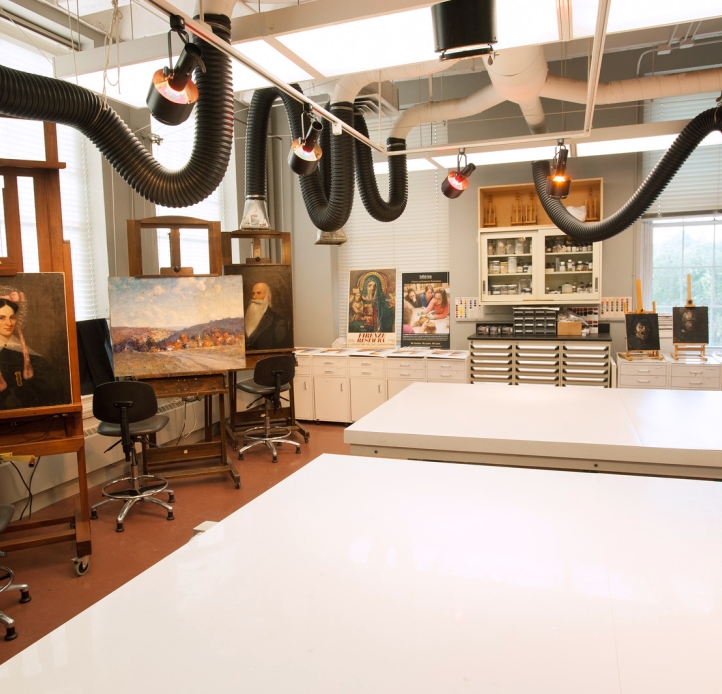
About Us
Partnerships & Collaborations
Partnerships
The Garman Art Conservation Department partners with art and cultural heritage institutions in Western New York, which provide a wealth of fine art, cultural heritage objects, historical collections and archaeological materials for conservation projects.
Student Opportunities
Students have the opportunity to treat collections from:
- AKG Art Museum
- Buffalo History Museum
- Burchfield Penney Art Center at Buffalo State
- Buffalo Museum of Science
- Special Collections department at the Central Library of the Buffalo & Erie County Public Library
- Seneca Iroquois National Museum/Onöhsagwë:de’ Cultural Center in Salamanca, New York
Collaborations
We are proud of our collaborations at Nash House and the Seneca Museum, which provide potential opportunity for international connection and experience. Our program offers connections with European, Mexican, and Peruvian Centers.
Diversity & Inclusion
A Statement on Diversity and Inclusion from the Patricia H. and Richard E. Garman Art Conservation Department at Buffalo State
The department is committed to the promotion of inclusivity, equity, and diversity in its education of conservation professionals, faculty and staff development, and its policies and practices.
The Garman Art Conservation Department is committed to providing a safe and inclusive staff and student community as outlined in The Equity and Diversity Statements of the State University of New York (SUNY) and Buffalo State.
The department actively strives to foster the development of conservation professionals, both student and staff, who are:
- committed to a diverse, equal, and inclusive community;
- committed to the access of local communities to the whole of human cultural heritage;
- committed to the access of individuals from diverse backgrounds, thoughts, and perspectives to
opportunities for education in field of heritage conservation, and doing so with an overall mission to incorporate the voices of those historically underrepresented in the field of conservation;
- committed to seeking out, listening to, and incorporating the perspectives of individual(s) who serve as the steward(s) of their cultural heritage in a respectful manner;
- committed to a conceptual framework of preservation that is adaptable to the needs of different types of cultural objects and is respectful to the beliefs associated with those objects;
- committed to the dissemination and promotion of thoughtful treatment and scientific methodologies to the larger cultural heritage community, and to the community from which the heritage material was derived
- empowered to be leaders, that can confidently face these aforementioned challenges and advocate for positive change in a respectful and informed manner.
The Art Conservation Department adheres to the Code of Ethics of The American Institute for Conservation of Historic and Artistic Works (AIC). As advocates for the care and preservation of cultural materials, it is imperative to recognize and honor the peoples from which an object originates. Students are encouraged to pursue conservation treatments and materials that are in line with these values.
The department emphasizes its dedication to generating awareness of the challenges of conscientiously caring for cultural property. These include:
- the limited access of many individuals and communities to cultural heritage;
- the lack of diversity among professionals in the field of conservation and thenormalization of that homogeneity;
- the need to include the perspectives of the peoples from which an object originates in the care of that object;
- the active dissemination of culturally sensitive practices among all conservation professionals and to the local communities from which the heritage material was derived.
The department is committed to identifying and working towards addressing these barriers according to the ethical guidelines from AIC and relevant international cultural heritage organizations.
The department actively encourages potential applicants to the Art Conservation Program to consider their role in cultivating diversity, inclusivity, and the promotion of respectful practices in the field of conservation.



